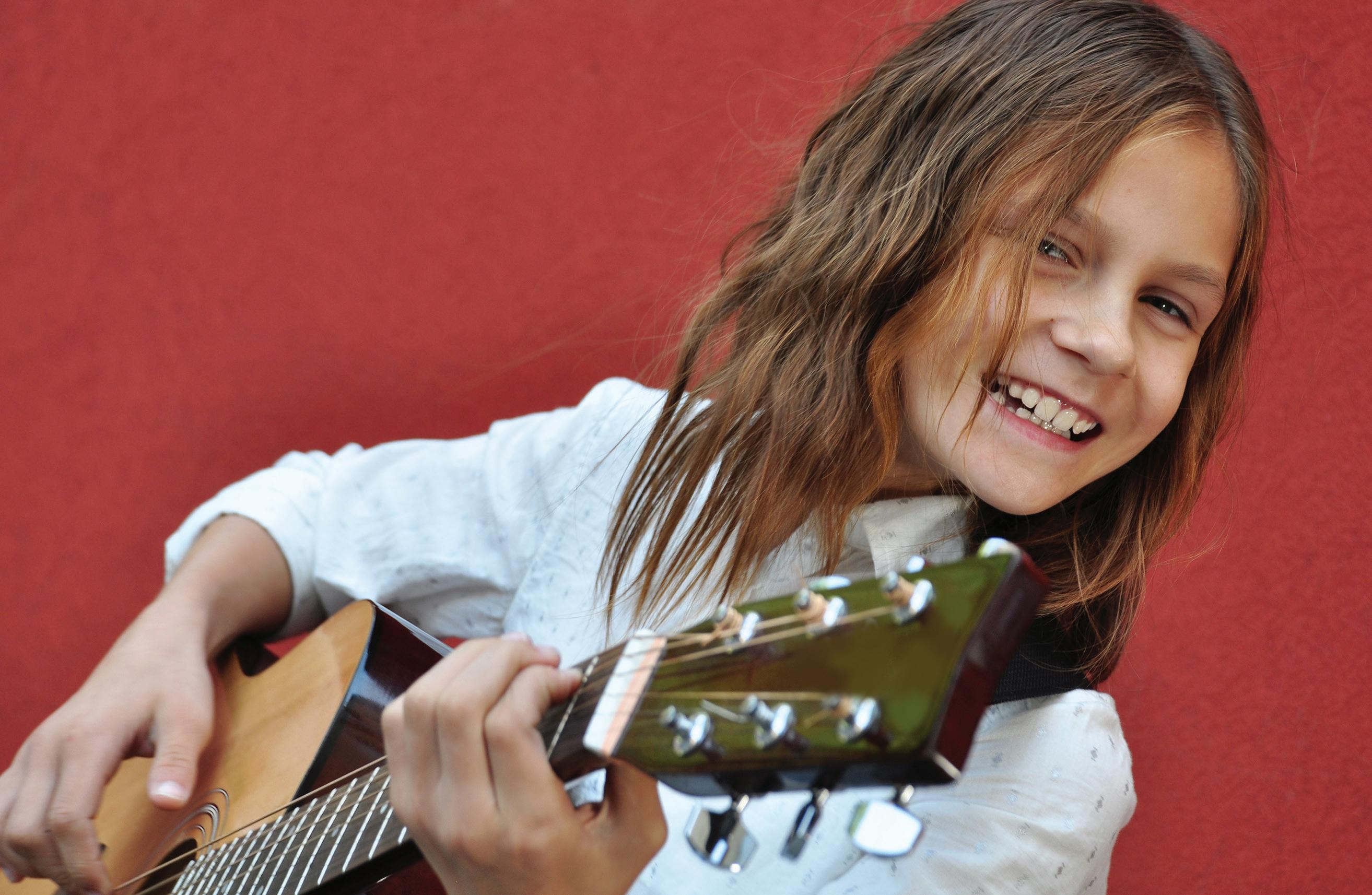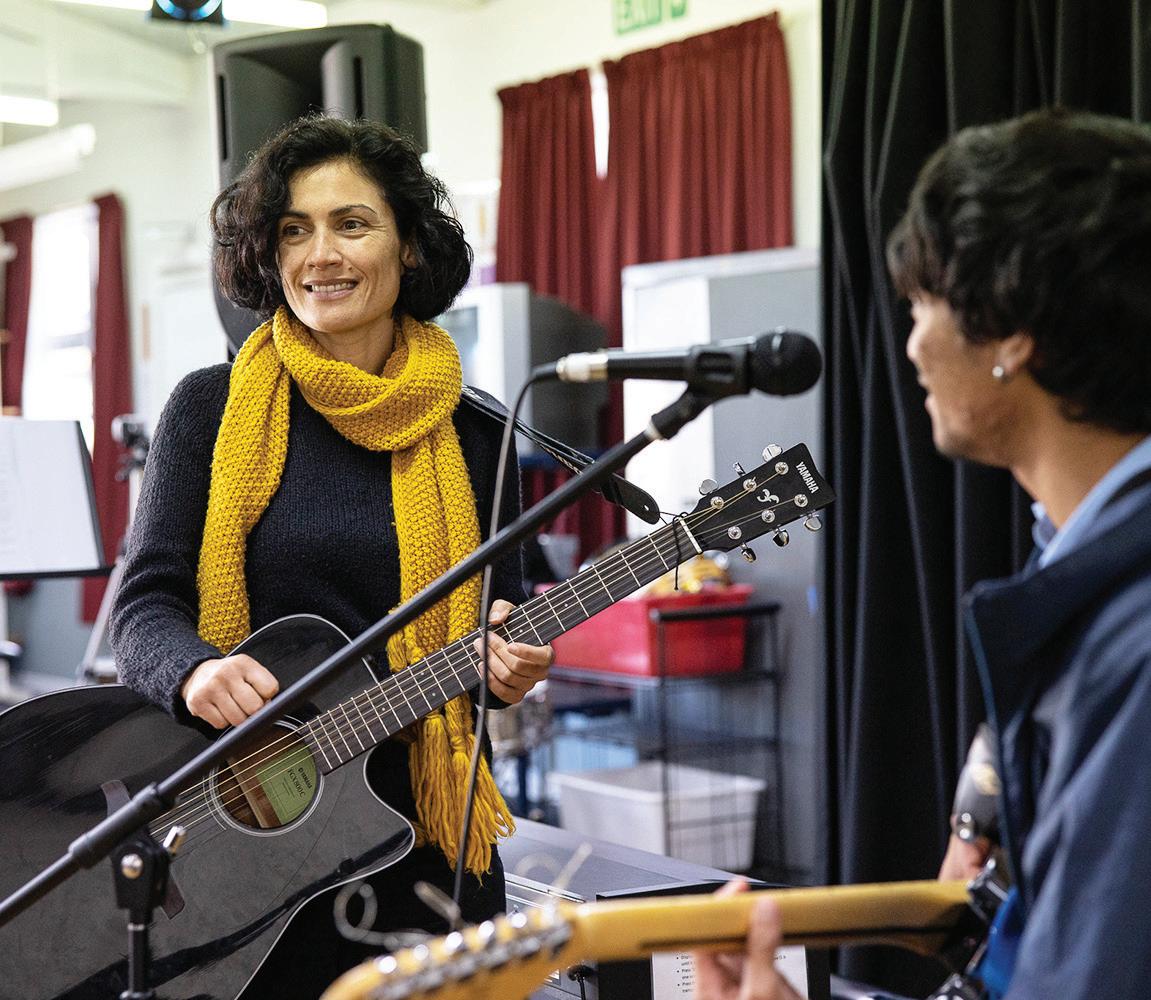
6 minute read
CREATIVE COLLABORATIONS
Learning an instrument builds on skills students can apply to other areas of life beyond school walls. One of the outcomes of the Creatives in Schools programme is built around the idea of supporting students’ wellbeing through the creative process. According to Scholastic, the performing arts benefit students well after the final curtain and the lights dim. Some skills Scholastic lists include:
• Solving problems and improvising solutions • Coping with anxiety and managing stage fright • Building self-confidence • Exploring new emotions, ideas and perspectives.
The Creatives in Schools programme originally began in 2020 and consists of four rounds of projects.
Applications for Round Three of the Creatives in Schools programme opened in June and close on 21 August 2021. Successful applicants for Round Three will implement their projects in the 2022 school year. For those who don’t know, the Creatives in Schools programme partners creatives with schools and kuras to share their skills with students through creative projects. By the end of the programme, four rounds would have taken place, starting in 2020 and ending in 2023. Already, a variety of projects have received funding from the programme ranging from working with textiles, learning and performing Pasifika dances, using technology creatively for game-based learning, and more. The focus of the programme isn’t so much the art forms themselves but the outcomes they bring to students and everyone involved in their education.
Programme purpose and implementation
Although there is a wide range of projects that are funded through the programme, they all have the same basic goals to accomplish. Holistic in nature, the outcomes of the programme are expected to serve the creative, students, schools, school staff, parents and, ultimately, communities as a whole.
Arts Online lists the programme’s successful school projects, one of them being AUT Centre for Refugee Education Early Childhood Centre. The centre is in a distinctive position when compared to other learning centres because the children who arrive at the centre often speak another language, come with past trauma and a disrupted education. Sensitive to where the children are coming from and the fact that student participation in drama positively affects children’s mental health and language skills, the centre utilised applied theatre to support children in their new life in New Zealand and literacy endeavours. To do this, creatives assisted teachers in their use of applied drama in lesson plans. Like the creatives involved in the previously mentioned project, the programme aids creatives by providing opportunities to collaborate with educational organisations and experience working with students and a source of income. In fact, in response to the pandemic, the Government allocated an additional $4 million to the programme to strengthen the creative arts sector. School staff benefit from the programme by building connections with parents and caregivers, while parents and caregivers get a glimpse of their students’ creative side through participatory and supportive roles. In order to receive funding, projects are expected to deliver on all outcomes as described on Arts Online.
Taking part in the programme
To apply, schools and creatives must develop a proposal and the school must submit the proposal to the Ministry of Education.
Responding to COVID-19 and its effects on New Zealand’s creative sector, the Government provided an additional $4 million to the programme. The boost in funds increased the initial number of programme projects from 304 to 510, providing more work for creatives and more educational opportunities for students and schools. Any one project can involve up to three creatives, various art forms, and multiple schools as long as the programme’s desired outcomes are met. If the proposal is successful, the creative and school can then plan and implement the project for the following school year. Although many schools have existing relationships with creatives in their communities, it’s not the case for everyone. If your school is looking for a creative to assist in developing and implementing a proposal to the Creatives in Schools programme, your school representative can look through Art Online’s ‘Available creatives’ page. School representatives can narrow their search by selecting the location, art form and language corresponding with the project. The search engine will produce anonymous profiles which match your search criteria. If any of the profiles suits your project’s needs, a request for the creative’s complete profile can be made online. Creative profiles are sourced from expressions of interest. More information on the Creatives in Schools programme and how to apply can be found on the Arts Online website: artsonline.tki.org.nz.


www.nzmusic.org.nz
The New Zealand Music Commission is a government-funded organisation entrusted with the continued development of Aotearoa New Zealand’s thriving popular and contemporary music industry. With responsibilities to the Ministry of Education and the Ministry for Culture and Heritage the Music Commission has initiatives that include programmes directed at supporting students in primary and secondary schools and kura.




The Musicians Mentoring in Schools Programme commenced in 2001 with the purpose of placing known professionals from the music industry in classrooms, to support teachers and students (Year 7 to 13) with their aspirations in performance, song writing, composition, digital production and understanding aspects of the music industry. The Programme visits over 60 mainstream schools and kura kaupapa Māori each year, stretching the entire length and breadth of the country. There is no cost to the school and the visits usually take the form of two days’ full-immersion for the Mentor and musically inclined students. We work in urban settings as well as in remote and rural situations, where it is often challenging to find music specialist teachers or sustain a music course of learning.
The Programme has incorporated over 150 musicians in its 20-year history, ranging from icons such as Annie Crummer, Jon Toogood, Maisey Rika and Rob Ruha to current stars such as Joel Shadbolt (L.A.B.), Kaaterama Pou (MAIMOA Music), Bella Kalolo and Laughton Kora (TVNZ Popstars coaches). Our selection and appointment procedures meet the requirements of the Vulnerable Children’s Act (2014) for adults safely working with youth.
In addition to the gains made in achievement our annual audit of teachers/kaiako and students/tauira highlight the long-lasting inspiration that young people gain from meeting a working music professional, as well as the many holistic gains in confidence, individuality and self-belief.
If you are interested in your school or kura being on our 2022 contact list please email education@nzmusic.org.nz with “Principals Today” in the subject line.
Thinking, Participating and Contributing. The Hook, Line and Sing-a-long songwriting competition has a ten-year legacy of involvement with primary, intermediate and secondary schools and is run in conjunction with MENZA, the national music teachers’ professional body.
Annually the call out is made for young writers to create original music, singing and playing about “what it is to live in Aotearoa New Zealand”. In 2021 the NZ Music Commission received 48 submissions from over 100 participants, covering themes including sustainability, citizenship, whanau, flora and fauna, kiwiana, holidays and iconic sites and sights. Each year the winning song is professionally recorded at Neil Finn’s Roundhead Studios, translated into NZ Sign Language, then released as a set of fresh audio-video and physical resources for teachers (non-musicians and musicians alike) to use in their classrooms.
These songs make solid impressions with staff and students, typically reaching over 25,000 sing-a-long views on YouTube. MusicWorks are our prize sponsors who generously donate over $1500 worth of goods to winning and participating schools. Each year New Zealand Music Month culminates in a sychronised performance of the Hook, Line and Sing-a-long winning song, at midday on May 31st.

Principals are encouraged to make their Syndicate Leaders aware of the competition and all the resources for teachers (non-musicians and musicians alike) which can be found at www.hooklineandsingalong.com/teach.










